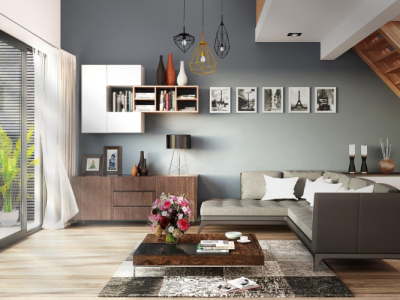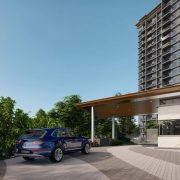Our sense of well-being in life, that is our contentment and mental health, are deeply affected by the living spaces we occupy. If our homes are not given due consideration and designed in such a way that enables us to feel positive and relaxed, we can soon find ourselves with less energy and happiness.
This is why a great deal of focus is placed upon well-being in design, with interior design professionals emphasising human-centric spaces within their work. If a living space is built around the needs of an individual or group, with furniture, colours, and decor supporting a resident’s needs, then it is not only going to be well-received but a healthier and more rewarding home to live in.
To show the potential value of a living space and how well-being can be improved through design, we’re sharing some of the best features for living spaces and how they can benefit health.
Biophilia
The term biophilia, meaning the love of nature, has been adopted by the interior design community as a greater number of trends occur that are each focussed on merging living spaces with nature. There are a number of reasons why these natural designs are growing in popularity with one of the most significant being the health benefits.
It is well-known that being outdoors and among natural landscapes has a dramatic and positive effect on wellness, with sunlight, fresh air, and tranquil spaces all promoting better health. By bringing these elements and aesthetics into living spaces, the same benefits can be enjoyed at home.
While some choose to shape their gardens with aromatic flower beds, bespoke log cabins, and dense lusciousness, others will focus on interiors, selecting furniture made from natural materials, adding texture to surfaces, and steering spaces toward organic and rounded shapes over harsh corners and edges.
Quality Of Environment
If physical comforts are compromised, mental health will follow. This is why it is important for living spaces to be tangibly comfortable and have a positive effect on physical health. Temperature and humidity are fundamentally important elements. If a home is too cold or damp, it will promote ill-health and, over time, reduce a resident’s quality of life.
Once the basics are resolved, however, then other comforts can be considered, such as comfortable mattresses, which promote positive sleep hygiene, and bright, naturally lit rooms, since sunlight helps to regulate circadian rhythms.
Functionality
When considering well-being, aesthetics tend to be the first port of call. While these are certainly important, there is also the matter of functionality, especially when it comes to regular utilities, such as the bathroom and kitchen space.
A functional kitchen space, for example, should be brightly lit and with plenty of worktop area open for food preparation. You will also hear the term clear workflow with regards to kitchen design and this describes the value of being able to complete kitchen tasks as easily as possible. If interior design, such as cupboard placement or sink access, inhibits the ability to move from one objective to the next, then the kitchen will, over time, become a source of stress.











Comments